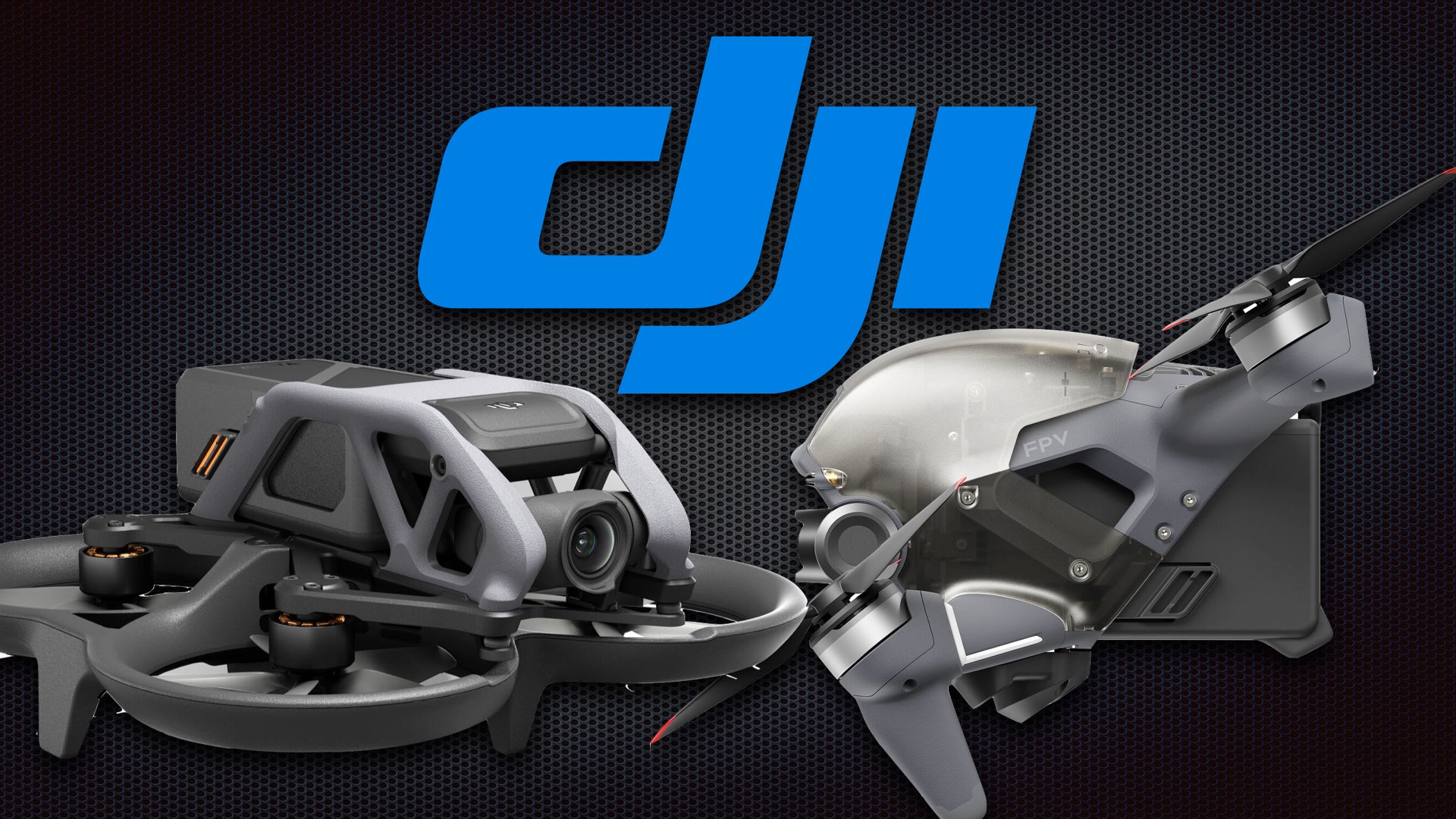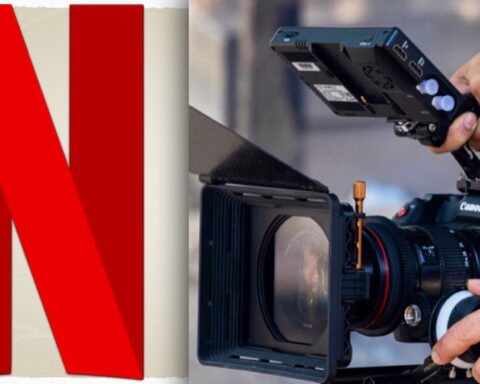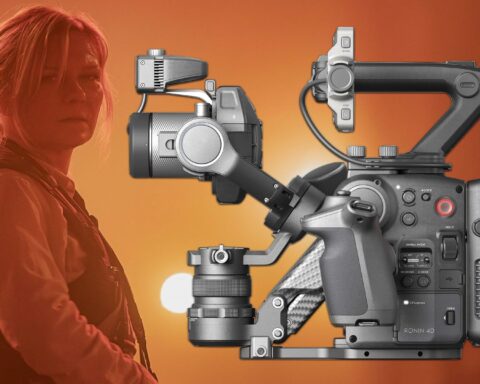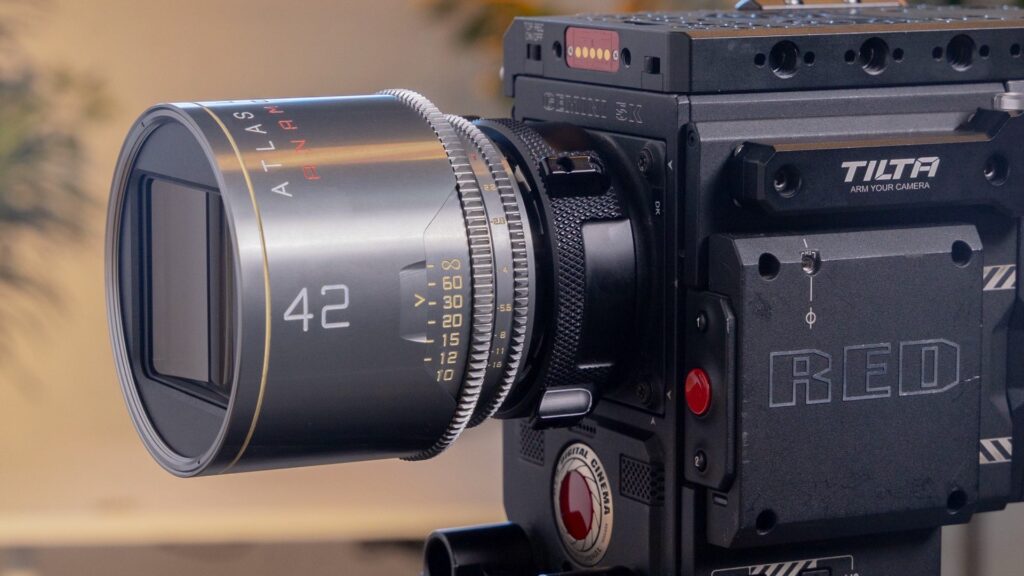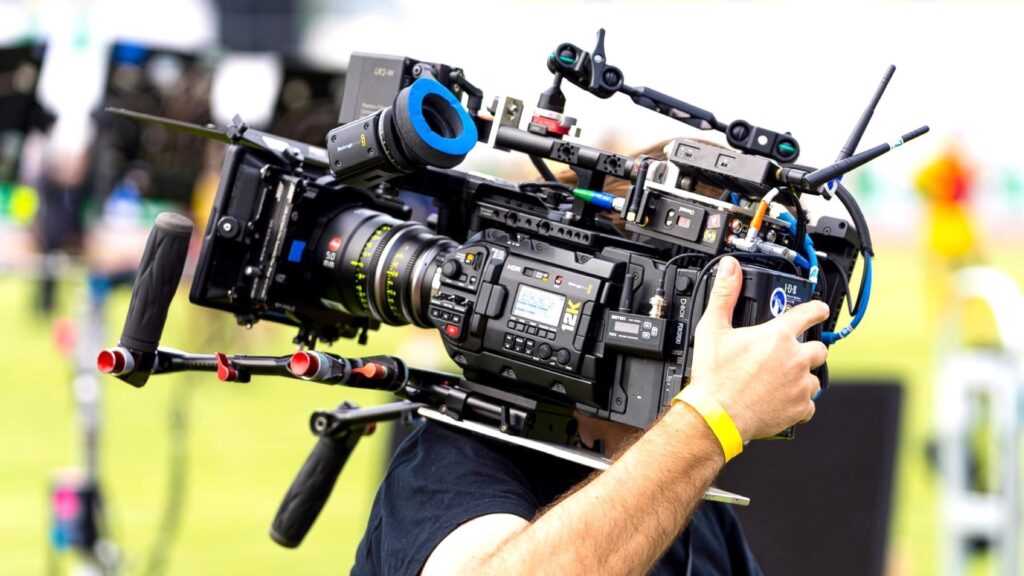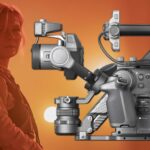First, let’s say it loud and clear. DJI has located the very niche aerial FPV (First Person View) in the middle of the mainstream. First was the DJI FPV Drone, and now it’s the ‘improved’ CineWhoop stye—Avata, that was designed for those who have zero knowledge of this very complicated methodology. Let’s talk about that.
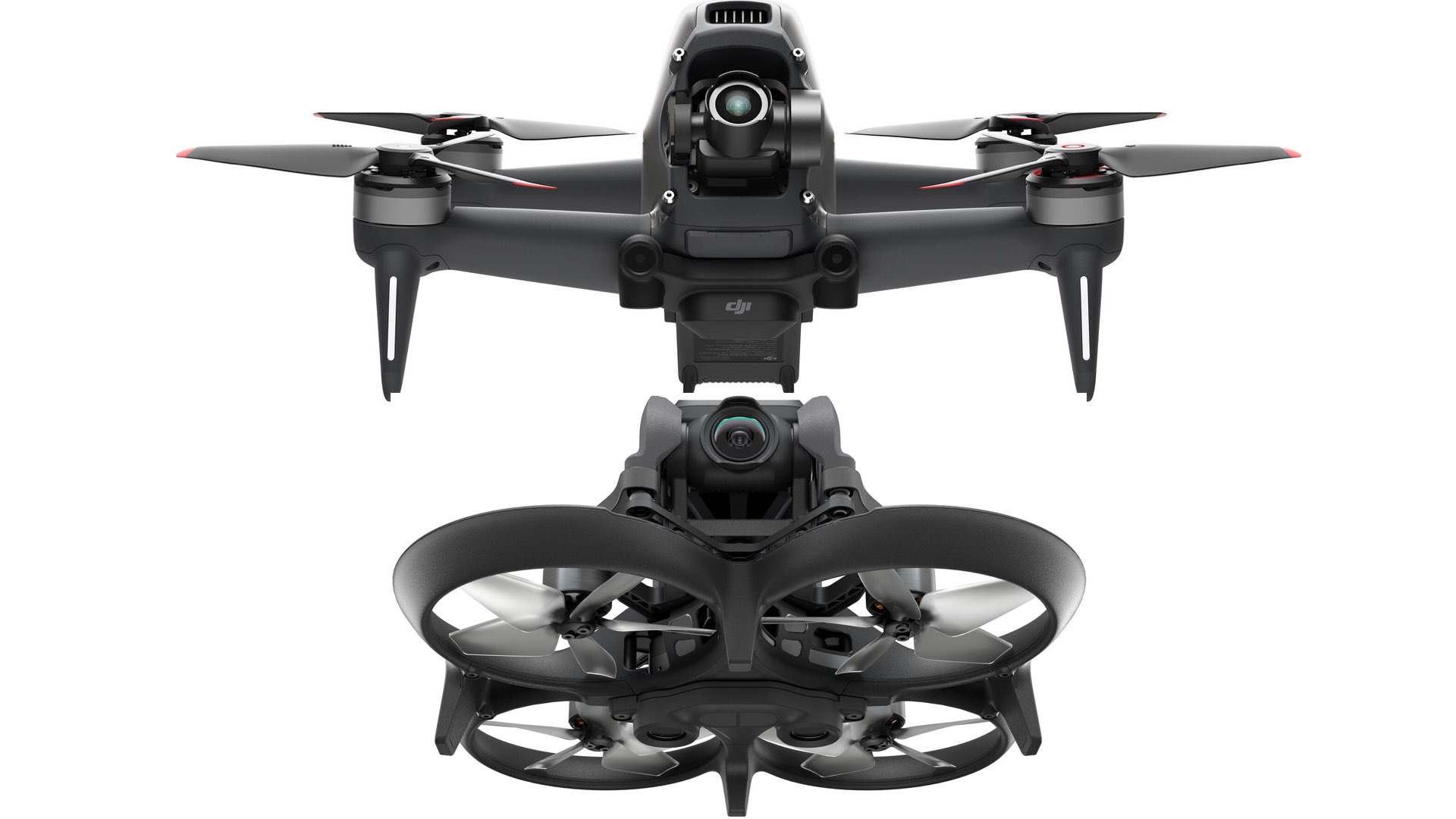
A few years ago, aerial FPV was a discipline that demanded vast expertise from operators (=pilots), since they had to build their own FPV drones. In order to get into this hobby, you needed to solder your drone, calibrate it, and not less challenging, fly it.
The passion for cinematic aerial FPV
DJI has decided to attack this very specific segment/hobby/professional niche for a reason. And I’m talking about the aerial FPV (First Person View) field. Why? Why not? Just look around you. Cinema FPV has been implemented deep into major high-end production. Even Michael Bay has embraced it as his new toy (go see Ambulance). This methodology is all over Netflix as well, especially in the era where cinema cameras are more lightweight and compact. Obviously, it’s the new hot trend, and it seems it’s here to stay, and even to be further enhanced and amplified. DJI has an integral part of it since junior FPV pilots can step up and make significant progress to fly a Komodo, or even ALEXA Mini during their FPV career. DJI helps in democratize the aerial FPV field.
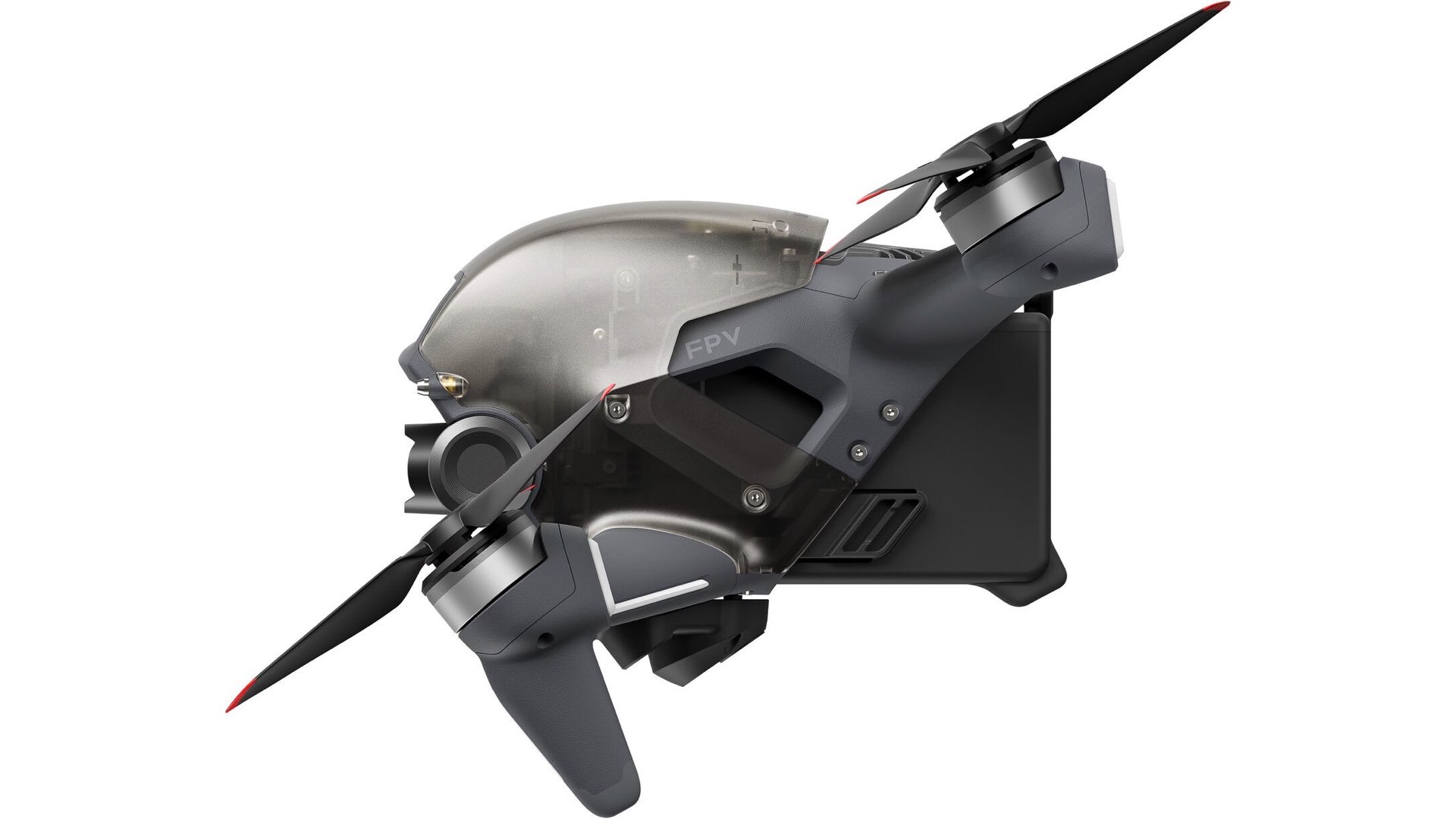
Cinema FPV has been implemented deep into major high-end production. Even Michael Bay has embraced it as his new toy (go see Ambulance).
Bringing it to the masses
A few years ago, aerial FPV was a discipline that demanded vast expertise from operators (=pilots), since they had to build their own FPV drones. In order to get into this hobby, you needed to solder your drone, calibrate it, and not less challenging, fly it. However, that was the exact case with regular aerial cinematography. Do you remember the days of lifted DSLRs by remote copters? Then DJI came along and turned that upside down, by making it more user-friendly, and insanely simple, with dedicated sensors to avoid obstacles. From then, anybody with zero experience could fly the Phantom (DJI’s first drone), and the rest is history. However, aerial FPV is another whole animal, and much more complicated. Even so, DJI revolutionized that as well, by creating its first FPV drone. And now, there’s a new other FPV drone, which is called Avata. The role of the first FPV is to allow filmmakers an easy and forgiving entry into the world of aerial FPV. The role of the Avata is to allow filmmakers an, even more, easier and even more forgiving entry to the world of aerial FPV. No more excuses!
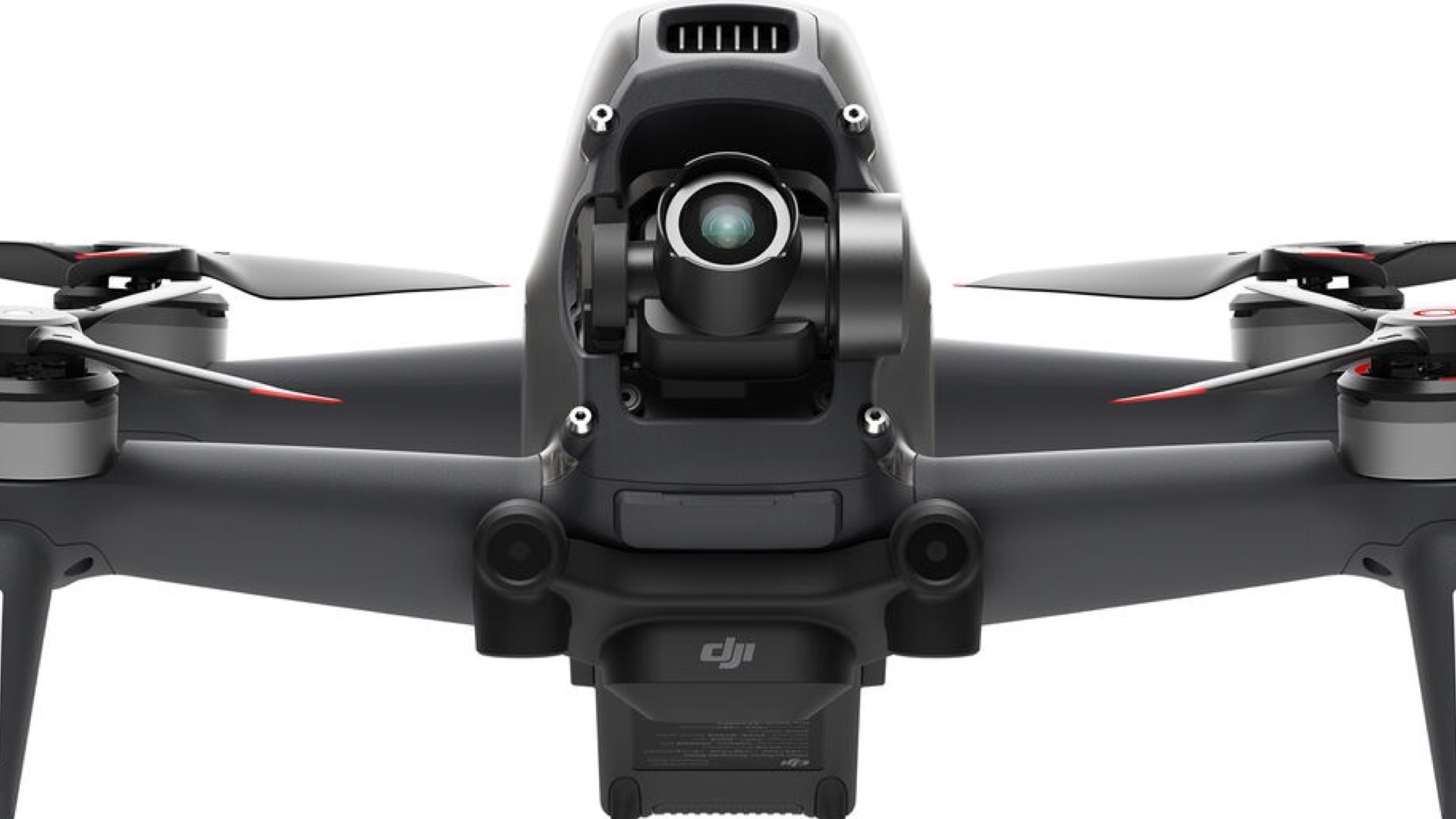
Avata vs. DJI FPV: Which is better?
Yeah, there’s a debate right there. However, it’s quite simple answering it. Specs-wise, they are more or less the same. Nevertheless, they are completely different. Let’s explain:
Picture quality
The Avata comes equipped with a 48MP 1/1.7″ CMOS sensor, which supports up to 4K video at 100FPS and with an ultra-wide 155° FOV. The footage is stabilized in two ways using RockSteady 2.0 EIS and HorizonSteady EIS. RockSteady EIS works to reduce camera shake, while HorizonSteady locks the Avata’s footage to a level horizon. It has some kind of flat picture profile for color grading, but it’s negligible. The first DJI FPV is able to record 4K Video at 60FPS and 150° Super-Wide FOV. Picture-wise, Avata wins, but only on paper, since it does not really matter as you will get very similar footage from both of them. Moreover, it’s not relevant. Why? Because for cinematography purposes you will need to use GoPro (Black Bones preferred) in order to shoot in real cinematic FPS which is 24. The first FPV drone can carry a GoPro pretty easily, as compared to Avata which might be a bit tricky. But yes, you’ll use GoPro to get decent footage, and that basically neutralizes the specs contest of both drones.
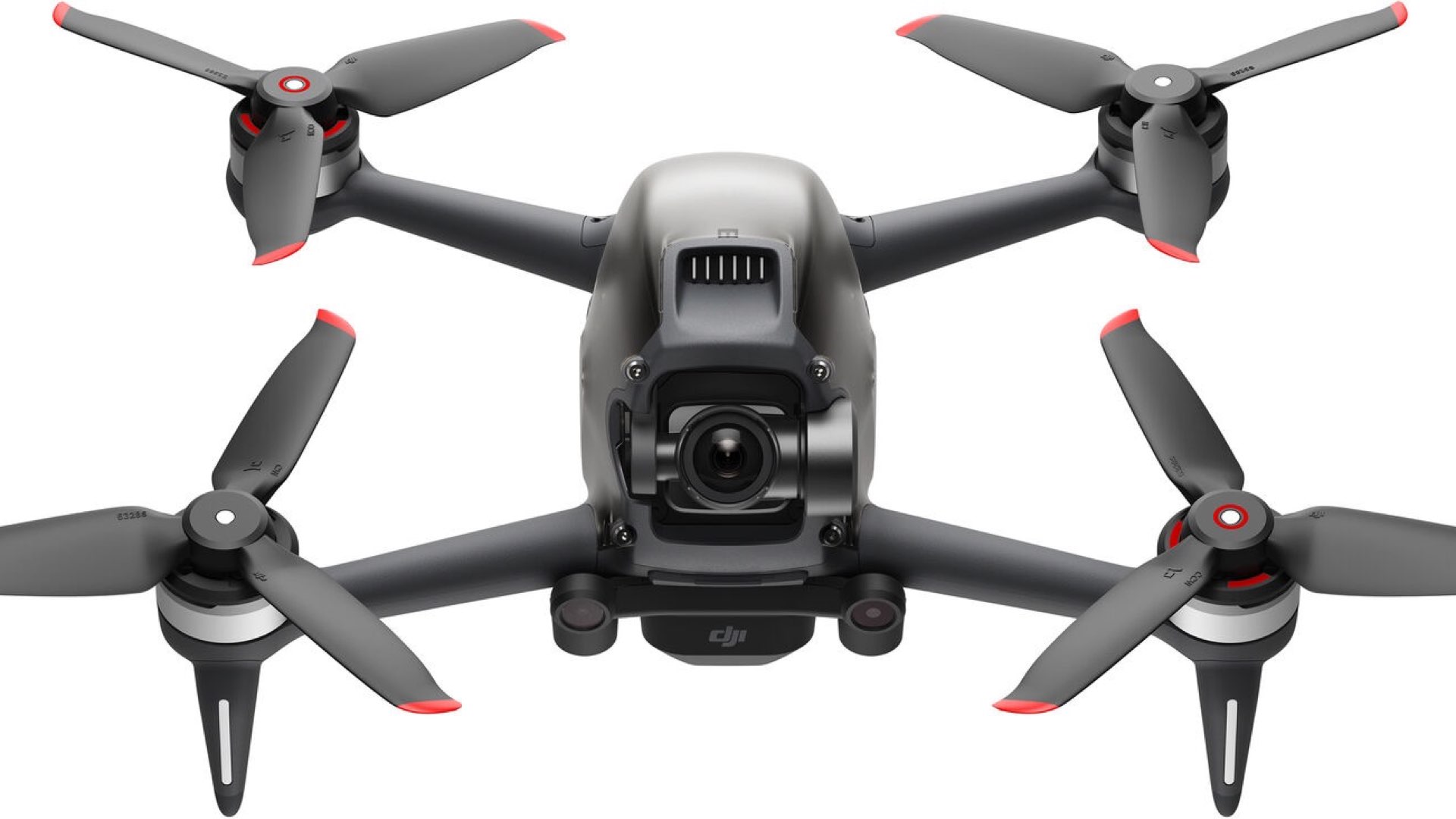
For cinematography purposes, you will need to use GoPro (Black Bones preferred) in order to shoot in real cinematic FPS which is 24.
Build quality and design
Simple answer—Avata wins since it’s equipped with four propellers protected with attached guards. This allows for close-ups filming indoors, near people, and through small openings without risking damage or injury to people. As opposed to the exposed and delicate arms of the DJI FPV Drone. Do some research and ask how many have crashed their DJI FPV Drones. In fact, is there someone that didn’t crash it? Thus, those fragile arms constitute as Achilles Heel of the FPV Drone. That’s why the Avata is the evolution of the first FPV Drone. DJI has designed it to be more robust in order to be able to fly indoors.
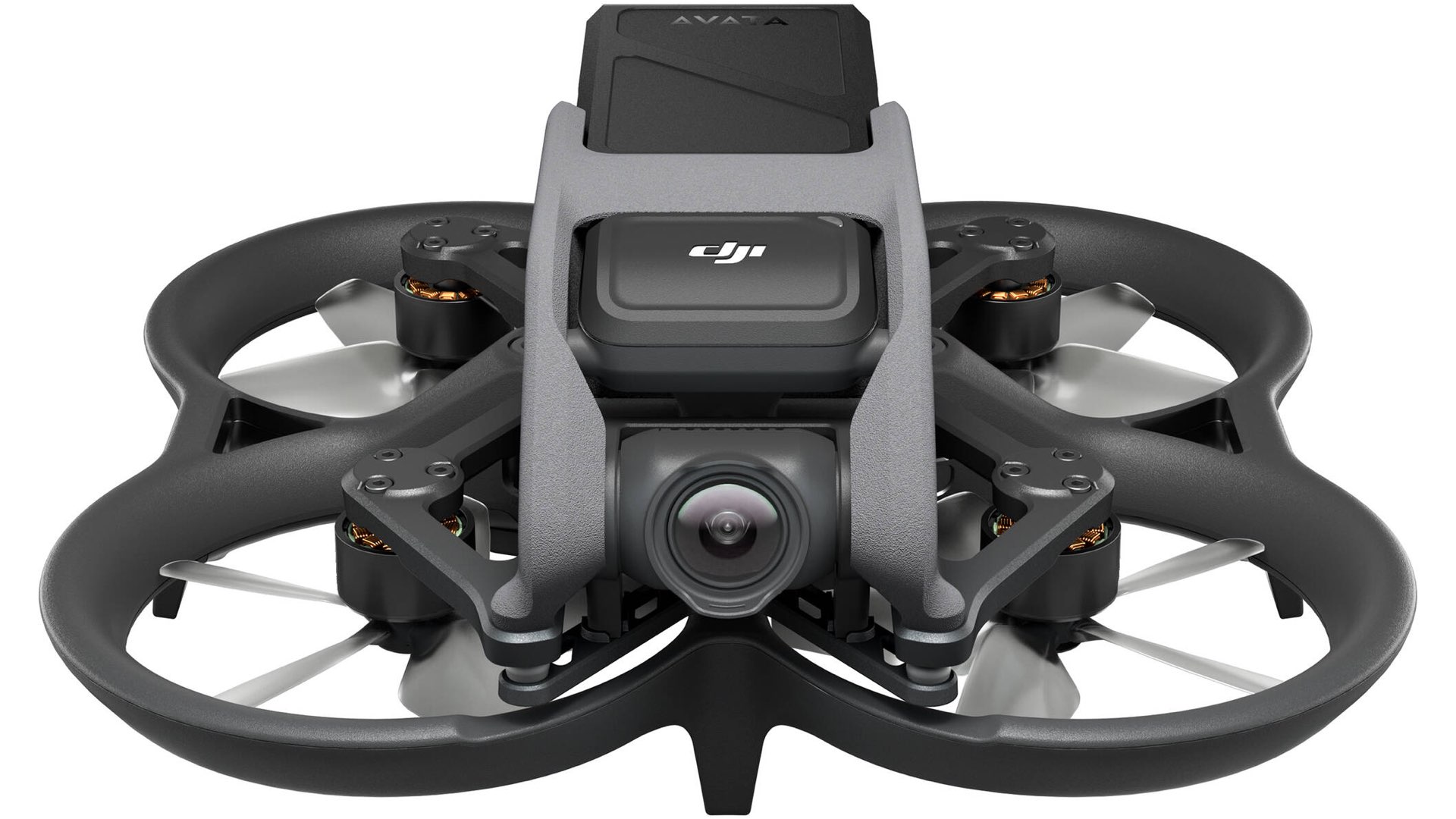
That’s why the Avata is the evolution of the first FPV Drone. DJI has designed it to be more robust in order to be able to fly indoors.
Performance
Now that’s where the FPV Drone excels. Avata reaches 60 mph, while the FPV Drone speeds up to 87 mph. That is significantly faster. The DJI FPV Drone climbs, flies, and dives faster. So those who want to shoot fast objects, there’s no brainer choosing the first FPV. As explained, Avata was created more for indoor cinematography. You most probably will not film race cars with it, as you most probably will not film inside an apartment with the DJI FPV Drone. Every drone has a defined purpose. To wrap things up, explore the slide below which demonstrates the main concepts of each drone: The first DJI FPV vs. the Avata:
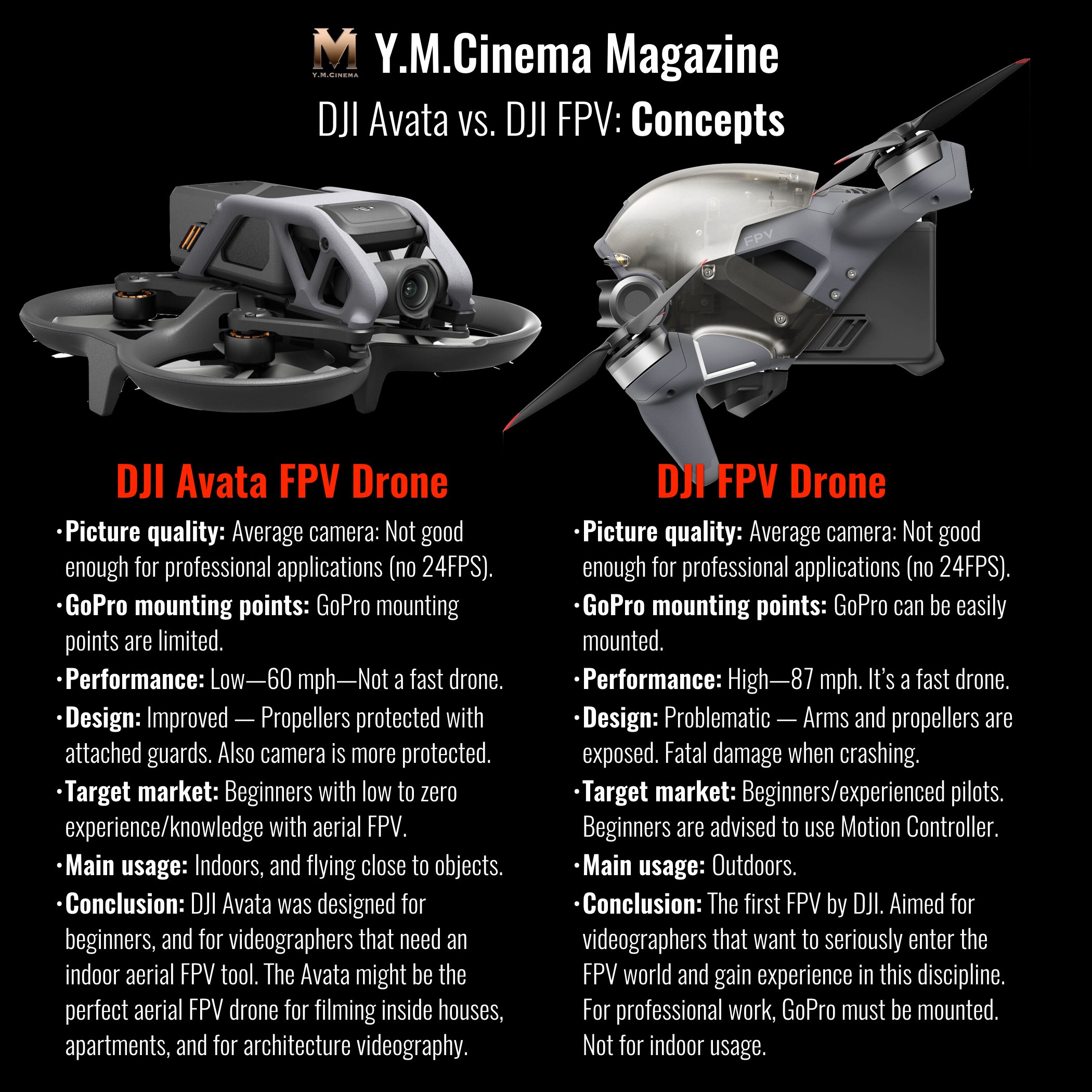
Avata vs. custom-built CineWhoop
In this article, we are not talking about the price, since it’s not so relevant factor. The prices are the same (give or take). Investing $100 or even $200 more or less is not what makes you decide which tool is the right for you. However, there’s no doubt that the Avata costs significantly more than custom built CineWhoop. Generally speaking, Avata is a ready-to-fly product, whereas custom-built CineWhoop must be… custom-built. But—when building it, you can purchase a carbon fiber chassis that owns fairly higher durability compared to the Avata’s chassis which is made from much more fragile materials. Furthermore, CineWhoops carry GoPro, which is a superior camera compared to the built-in camera in Avata. Thus, custom-built CineWhoop is much more appropriate to be utilized in a professional job. Between us, you’ll not use Avata in high-end projects, would you? Anyway, the Avata was not developed for that purpose, but to grant junior/inexperienced FPV pilots the privilege of instant flying, and that’s a lot. In fact—that’s huge, as you pick up your Avata and start flying immediately with the Motion Controller.
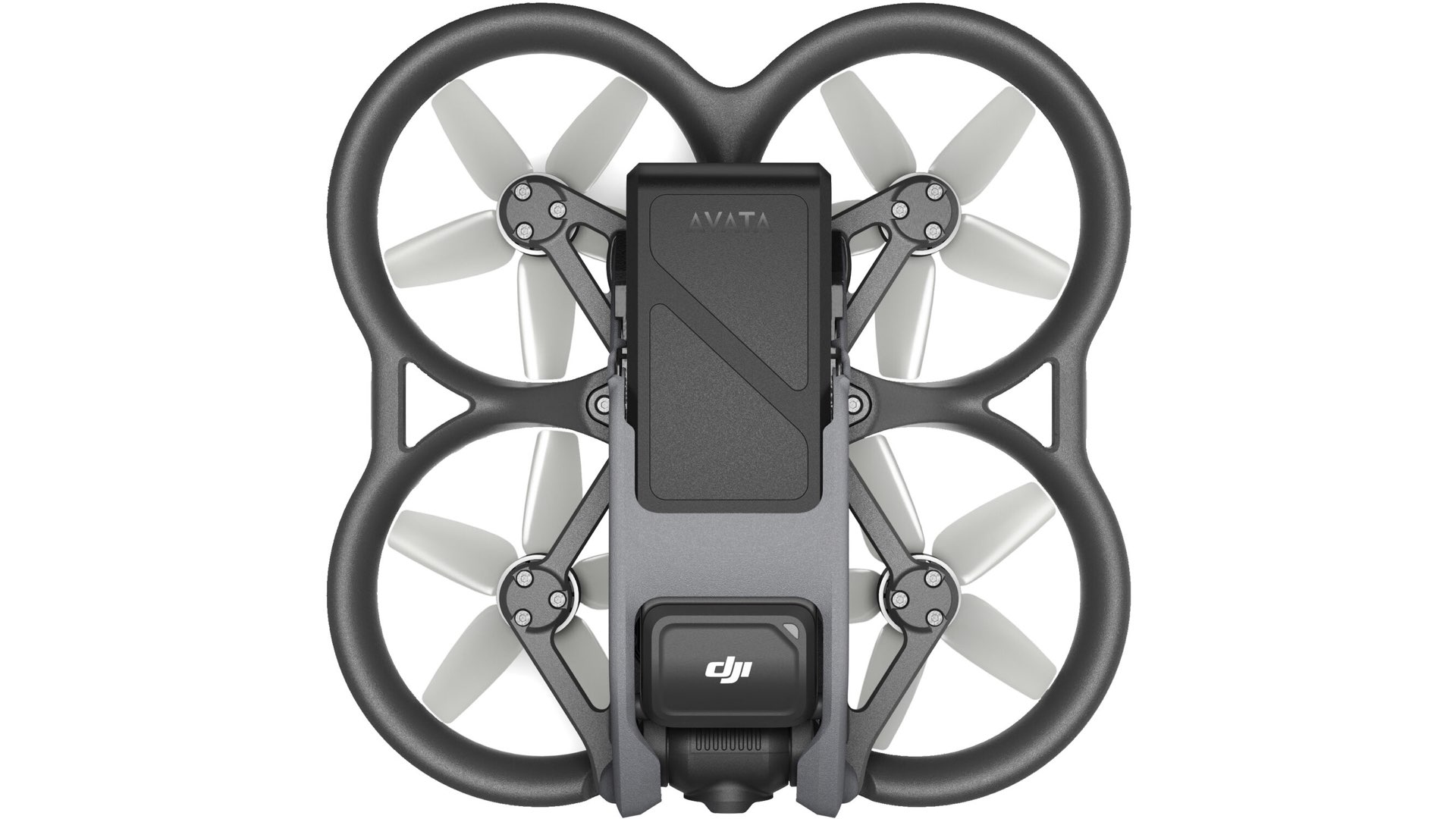
Custom-built CineWhoop is much more appropriate to be utilized in a professional job. Between us, you’ll not use Avata in high-end projects, would you?
Let’s sum it up
This article aims to explain DJI’s goal for developing its first drone (DJI FPV), and its second drone (Avata), and to answer the question of why DJI got into the aerial FPV business in the first place. Moreover, we hope we managed to shed light on the crucial role of DJI to transform a complicated and very technical discipline into the mainstream, so junior/inexperienced FPV filmmakers can enter the aerial FPV world. These creators might be the next Hollywood aerial DPs. If you don’t agree just explore the DJI FPV communities over the World Wide Web to reveal some of the finest aerial FPV art forms. Happy shooting and have a safe and comfortable flight.
Product List
Here’re the products mentioned in the article, and the links to purchase them from authorized dealers.
- DJI Avata FPV Drone
- DJI FPV Drone (Combo)


